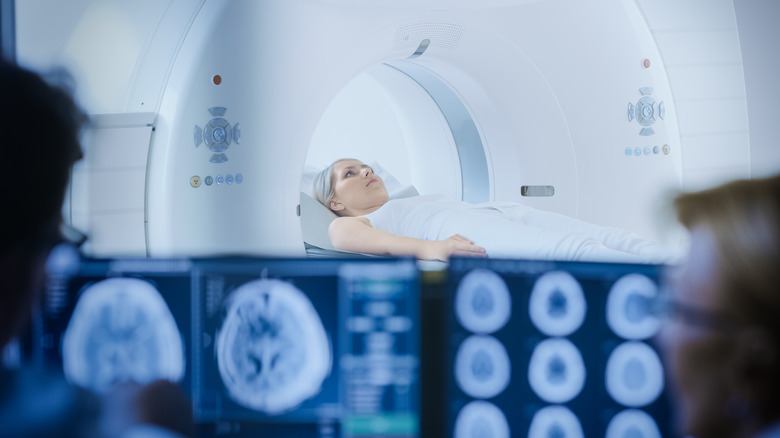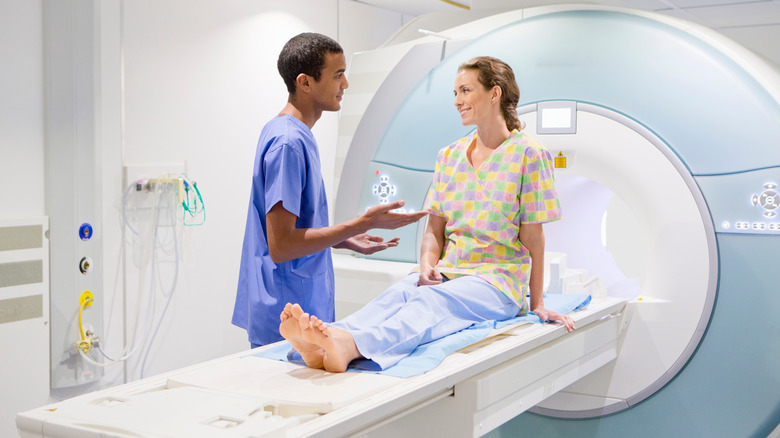How A Global Shortage In Contrast IV Fluids May Cause Delays In Routine CT Scans
A CT scan — short for computed tomography scan — produces a more comprehensive image than that of a traditional X-ray (per Johns Hopkins Medicine). In many cases, a physician can get an even clearer internal image through the use of an iodine-based liquid known as intravenous (IV) contrast fluid that's administered through a patient's vein (via Melbourne Radiology Clinic). The dye visually boosts the contrast of the affected organ or tissue, making diagnosis easier and more accurate. Whether they are done with or without contrast, CT scans can be an important tool for the detection of cancer or internal injury or bleeding, according to Johns Hopkins Medicine.
Due to a COVID-19-related supply shutdown in China, the U.S. Food and Drug Administration (FDA) has announced that the IV contrast fluids Iohexol and Iodixanol are now in short supply across the globe, reports Healthline. In some medical facilities, this has already led to the limiting of IV contrast material for those in need of immediate critical care.
Alabama-based diagnostic radiologist Dr. Joy Henningsen tells Healthline how her facility is currently navigating the situation, stating, "We are having to triage and essentially ration care due to lack of supply of a basic diagnostic necessity ... Iodinated IV contrast is very precious right now, so we're saving it for things like severe bleeding, severe trauma, procedures in the angiography lab."
Doctors emphasize the availability of alternative options
For those with non-life-threatening conditions, experts say this may lead to the postponement of routine CT scans for some patients, including those hospitalized who regularly undergo scanning to monitor disease progression (via Healthline). For others, it may result in delayed detection of undiagnosed conditions.
However, experts emphasize that CT scans are not the only means by which physicians are able to administer care. As reported by the University of Kansas Health System, clinical service chief of radiology Dr. Philip Johnson elaborates, stating, "This is not new territory for us. We are just going to have to be much more careful and thoughtful about the use of contrast during this period of shortage. We have alternative ways to get our answers. We can place more emphasis on the physical exam. We can use MRI, ultrasound and other tests. We do not have to have dye for every study."
As per the FDA, while the shortage is expected to continue for the time being, efforts are being made to increase supply throughout May and June, with the expectation of being fully restocked by July.


